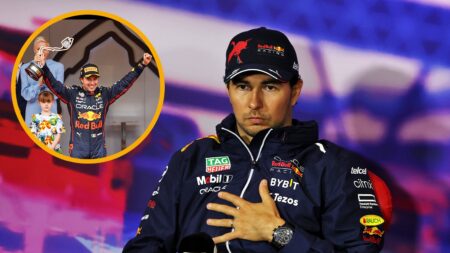The thin air has made cooling a crucial factor in recent years with Mercedes often struggling with overheating as a result. The tightly packaged, sidepod-less concept of the W13 has already shown itself to be vulnerable to cooling issues in Spain, where Lewis Hamilton lost fourth place as a result. The Red Bull Ring will test whether Mercedes has solved the weakness.
If it has, then don’t be surprised to see Hamilton and George Russell closer to the front in the upgraded Mercedes, which has finished in a podium place for the last two races in a row.
Despite falling short of Verstappen in qualifying at Silverstone and complaining that he’s less comfortable with the latest, updated, Red Bull, Sergio Perez showed his steel to fight back to the podium, and will be looking to build on his second place in the title race,
And Carlos Sainz said that he’s keen to follow his British Grand Prix win with another victory, which could provide more sparks within a Ferrari team that continues with questionable strategy calls.
How many laps is the Austrian Grand Prix?
There will be 71 laps around the 2.7-mile Red Bull Ring, leading to a total race distance of 191.7 miles. There will be three DRS zones with the first being along the start-finish straight up to turn 1, followed by another DRS zone up through Turn 2 into the tricky Turn 3 with the final DRS zone stretching from turn 3 down the hill to Turn 4.
As ever, there is a time limit that will come into play in the event that long safety car periods take the race beyond two hours.
The 100km (62 mile) sprint race takes place over 24 laps.
2022 Austrian Grand Prix session times
| Friday 8 July | Saturday 9 July | Sunday 10 July | |
| F1 | Free Practice 1 12.30pm Qualifying 4pm |
Free Practice 2 11.30am Sprint race 3.30pm |
Grand Prix 2pm |


